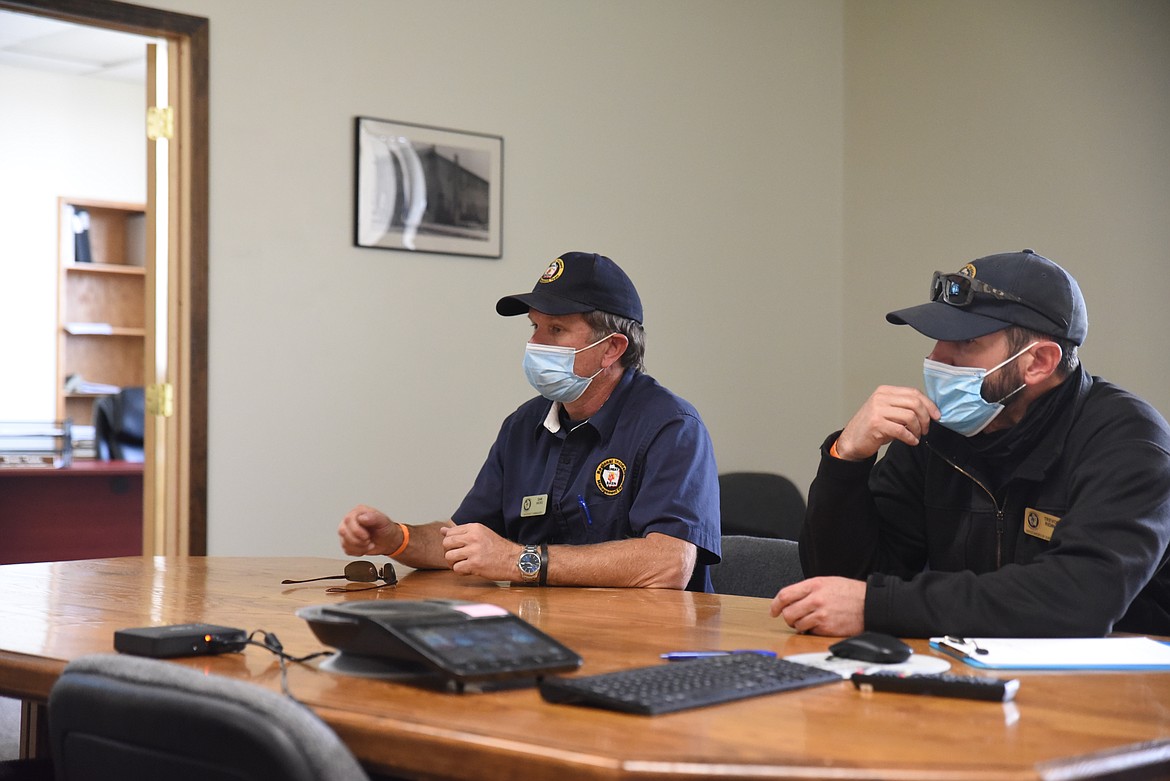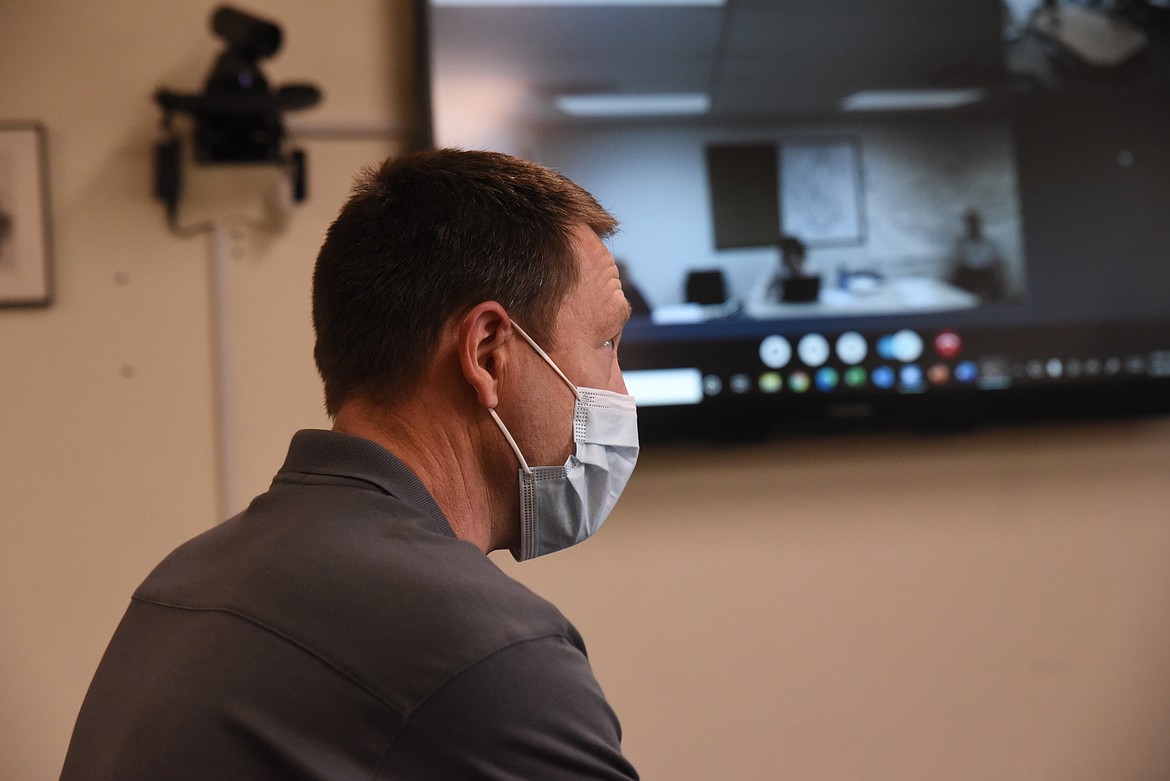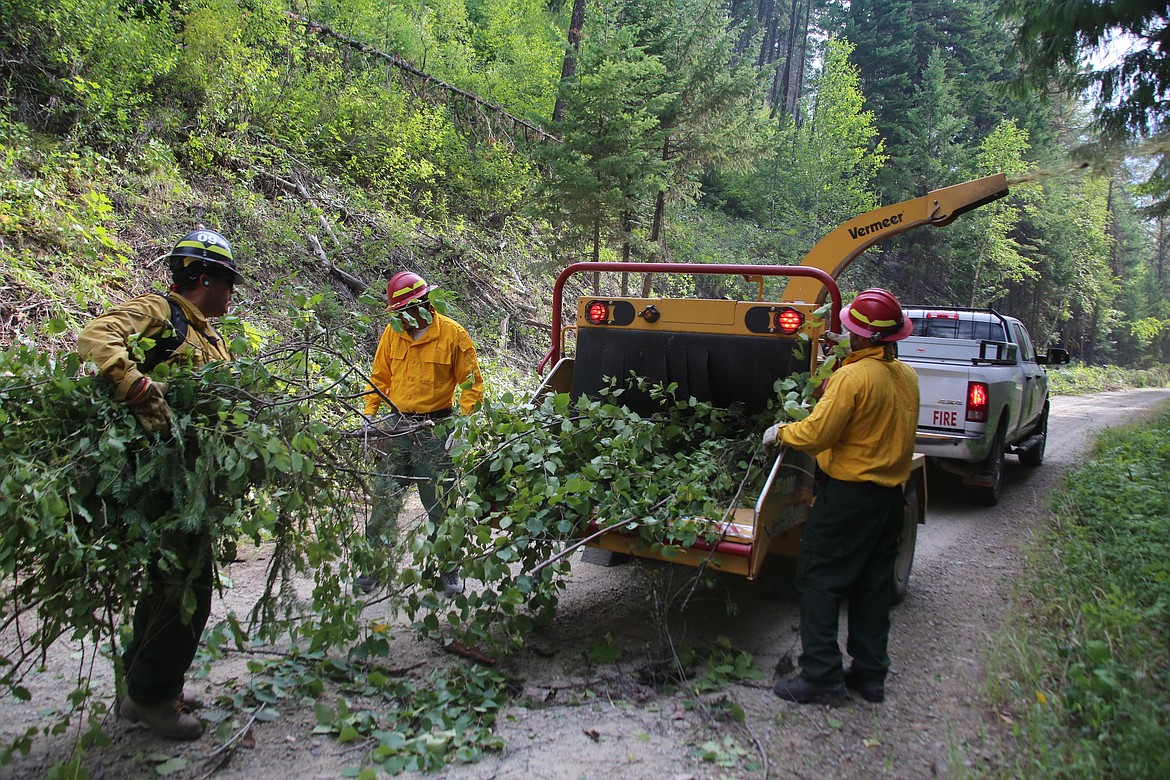Lincoln County competing with other locales for wildfire resources
Officials with the team overseeing the Burnt Peak and South Yaak fires pushed back on rumors that crews were slow walking firefighting efforts earlier this week.
“There was a rumor going around that the teams, the fire teams, are milking the fire,” said Sam Hicks of the Great Basin Incident Management Team No. 5 on Aug. 18. “That is not the case at all. We are actively engaged, day in and day out.”
Speaking before the Lincoln County Board of Commissioners, Hicks said the whispers reached his ears during a public meeting the team held in Troy. Despite residents’ frustrations with the effort, he said that the safety of the public and his personnel were paramount.
“However, if it’s not safe to work in the area [the fire] is in, they will not work there,” Hicks told commissioners Jerry Bennett (D-2) and Brent Teske (D-1).
As Hicks updated commissioners, the Burnt Peak Fire was burning at 4,066 acres with 29 percent of it contained. The South Yaak Fire was at 11,585 acres and 45 percent contained.
Hicks said efforts were following the PACE model, meaning the construction of primary, alternate, contingency and emergency lines along the fires. Where personnel can directly — and successfully — fight the fire, they do so, he said.
“We’re not abandoning the fire, we’re just doing it safely,” Hicks said.
Longstanding challenges remain. Echoing personnel from previous commands working the fires, Hicks and Trevor Riding, operations chief for Great Basin Incident Management Team No. 5, said the terrain around both fires had proven difficult to traverse. Logistically, resources and manpower remain in short supply, Hicks said.
“We’re competing with the entire nation for resources,” he said.
The country remains in National Wildland Fire Preparedness Level 5, which means ongoing, complex blazes across the country have stretched federal supplies, equipment and manpower. Bigger fires threatening homes and lives elsewhere take priority, Hicks told commissioners.
In Lincoln County, timber is burning. While that’s an important resource locally, it doesn’t match up with assets threatened by other fires, he said.
“We do continue to stress the importance of resources here, but when we’re competing with fires burning whole towns down, it’s really hard to justify the need for hotshot crews when it’s timber burning here,” Hicks said.
During the community meeting on the fires earlier in the week, officials received questions from residents about the perceived lack of air support. Hicks said that air assets are requested daily, but the decision ultimately fell on pilots. They made their ruling based on visibility and safety, Hicks said.
“We request aircraft everyday … it goes back to the base and the pilots look at visibility,” Hicks said, telling commissioners that helicopters had taken to the sky just two days during the team’s time in the county.
“While we would love to fly them, the bulk of the time it’s limited by visibility,” he said.
Rain through most of Tuesday did lend a hand to firefighting efforts. The area around the Burnt Peak Fire received 1.01 inch of rain, officials said. That data was unavailable for the South Yaak blaze, but Hicks estimated roughly the same amount of rain fell on that fire.
“I don’t believe it’s enough to call it a season ending event, but it’s a season slowing event,” he said. “This thing is going to be here for a while.”
The moisture, though, may dampen the level of resources Lincoln County receives going forward.
“We weren’t able to hide our rain,” said Chad Benson, supervisor of the Kootenai National Forest, who also was in attendance. “It’s out there that we got a pretty good shot of moisture, which is great. The ramification of that is in the next four to five days, when they’re looking at team assignments, I think we’re going to have a hard time competing for the same level of support that we’re getting.”





